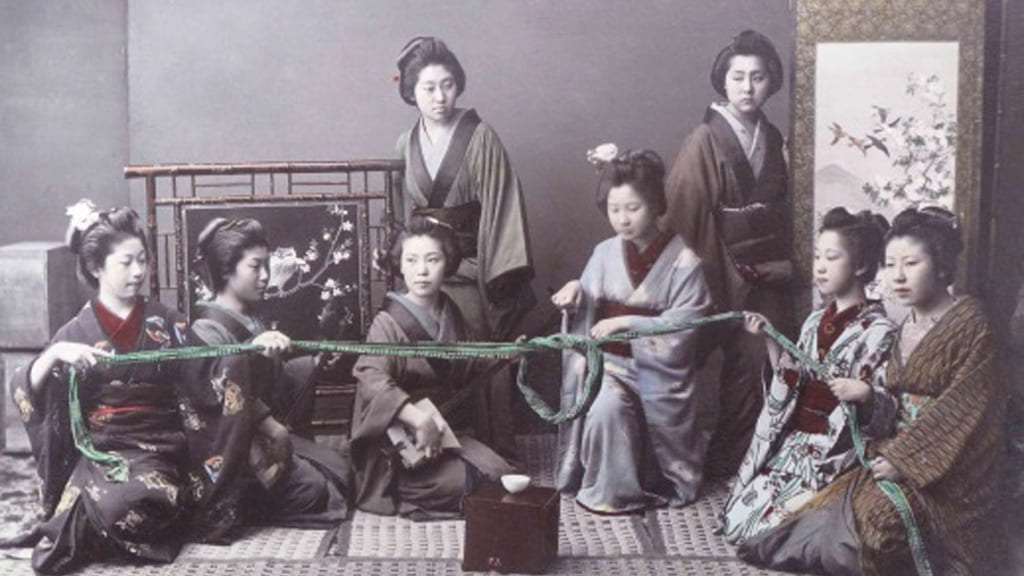Global Vistas: American Art and Internationalism in the Gilded Age explores the importance of international travel and exchange to American art of the late nineteenth century, a period of transition for the United States marked by the rise of global trade, international tourism, massive waves of immigration, and forces of orientalism and imperialism.
Through a selection of paintings, prints, photographs, and decorative arts from the Mildred Lane Kemper Art Museum, as well as other collections at Washington University in St. Louis, this Teaching Gallery exhibition reveals how Americans increasingly defined their nation by looking to the foreign cultures and landscapes of Asia, the Middle East, Europe, and the Caribbean basin. They imbued their art with a modern, multicultural spirit that also announced the country’s emerging status as a global power.
In the decades following the Civil War, many Americans eagerly turned away from recent violence at home toward new vistas of adventure and opportunity abroad. A boom in international travel was facilitated by improvements to communication and transportation networks, such as the laying of the first transatlantic cable, the completion of the transcontinental railroad, the opening of the Suez Canal, and the introduction of regular steamship service between San Francisco and Yokohama, Japan. Young American artists flocked to study in Europe’s great art centers, often staying overseas for many years and establishing vibrant expatriate communities. Increased commerce created a single marketplace that made available to domestic consumers a dizzying variety of global goods. World’s fairs in Philadelphia (1876), Chicago (1893), St. Louis (1904), and elsewhere stoked visitors’ fantasies about exotic people and places and encouraged American artists and manufacturers to integrate diverse foreign influences. American art and design became an eclectic, international affair. “We can deal freely with forms of civilization not our own, can pick and choose and assimilate and in short…claim our property wherever we find it,” mused the American novelist Henry James, himself a worldly cosmopolite who lived abroad for many years. According to James, the artists and writers of his young country were unencumbered by deep traditions of their own and thus free to synthesize “various National tendencies.”[1] As the century closed, more and more Americans believed that they were entitled to absorb the goods, materials, and styles of other cultures, essentially claiming the world as their property, an attitude linked to the growing imperial ambitions of the US.
This exhibition tracks the circulation of culture, knowledge, goods, and people in various directions across the increasingly networked world of the Gilded Age. In five sections the exhibition highlights key sites in the period imagination: Venice, Japan, the Holy Land, medieval England, and Panama. In reality, to nineteenth-century Americans, the meanings of these places were often fluid or overlapping. For example, Americans thought of Japan as a living “medieval” society and identified Japanese craftsmanship with the esteemed art of medieval England. During the construction of the Panama Canal, the importance of the isthmus to American global commerce caused artists to view Panama as an uncanny composite of many locales and peoples around the world.
As these impressions suggest, the horizons of American artists, travelers, and collectors were often narrowed by their own desires and prejudices. The pull of Americans’ preconceptions constrained the enlarging potential of new experiences. In The Innocents Abroad (1869), Mark Twain wrote of American tourists to the Holy Land: “Honest as these men’s intentions may have been, they were full of partialities and prejudices, they entered the country with their verdicts already prepared, and they could no more write dispassionately and impartially about it than they could about their own wives and children.”[2]
The “global vistas” included in this exhibition thus speak to the complexities of American life as much as the realities of the new worlds opened to US trade, exploration, and settlement. Several themes recur across the project. Although the Gilded Age was an era of unprecedented material prosperity in the US, many Americans suspected that the excesses and corruption of the era actually had diminished their quality of life. The perceived mammonism of Gilded Age America drove many Americans to idealize societies in Venice, Japan, and elsewhere as more concerned with artistic and spiritual values than material or business matters. Anxiety about the social and environmental consequences of hothouse industrialization in the US, including the influx of millions of immigrant workers who tended the nation’s factories, produced a gospel of antimodernism that romanticized places seemingly unscathed by industry (yet paradoxically accessible via modern transportation and economically dependent on the rise of tourism). At the same time, America’s industrialization and related technological and scientific developments fueled a spirit of progress that often expressed itself in condescension toward “less advanced” cultures in Asia, the Middle East, and elsewhere.
During the late nineteenth century, America was aggressively asserting itself as a major imperial power on the world stage. Its victory in the brief but bloody Spanish-American War (1898) ended with Spain ceding its colony in the Philippines and other territories to the United States. America annexed the independent islands of Hawaii and completed the conquest of Plains Indian tribes in North America. In 1903, the US acquired total control over the Panama Canal Zone after intervening in Panama’s struggle for independence from Colombia. America’s expansionist agenda opened a maze of new connections and transformed its relationship to the foreign populations of the world. Expansionists believed they had the right, even the responsibility, to civilize and Christianize the “primitive” non-Western societies on the colonial periphery. Such imperialist ideas inevitably inform the works in this exhibition.
But these artworks also reveal a more complicated dialogue between America and the world. Foreign artists actively participated in defining their cultures for the American audience, and they often did so in strategic ways that advanced their own commercial and political interests. It is these cross-cultural entanglements that make the Gilded Age such a fascinating moment in the global history of art.






Image credit:
Unknown (Japanese), detail of Nikko, Shinkyo Bridge over the Daiya River, n.d. Mounted hand-colored albumen print, bound in album, Japan, vol. 8. Russell Sturgis Photograph Collection, Kranzberg Art & Architecture Library, Washington University in St. Louis.